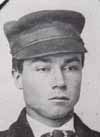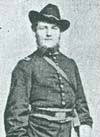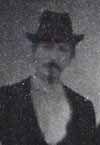John A. Bailey was born in Jo Daviess County, Illinois, on September 20, 1847. He was a Saddler with Company B who was with the pack train and participated in the hilltop fight during the Battle of the Little Bighorn.
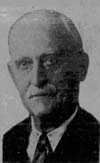
Jacob Horner (left) died of a respiratory infection on September 21, 1951, in Bismarck, North Dakota, and was buried in St. Mary’s Cemetery there. He was a Private in Company K who was not present at the battle due to detached service.
Charles Henry Bischoff was born in Bremen, Germany, on September 23, 1855. He was a Private in Company C who was not present at the battle due to detached service.
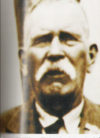
Daniel Newell (left) died of gangrene on September 23, 1933, at Hot Springs, South Dakota, and was buried in Bear Butte Cemetery in Sturgis, South Dakota. He was a Private in Company M who participated in the valley fight and was wounded in the hilltop fight.
Jahn Zametzer died at the U.S. Soldiers’ Home in Washington, D.C., on September 24, 1877, and was buried in the National Cemetery there. He was a Private in Company M who was not present at the battle due to illness.
John Robert Cooper died on September 24, 1903, in Harris, Iowa, and was buried in the Fairview Cemetery in Ocheyedan, Osceola County, Iowa. He was a Private in Company H who was wounded in the hilltop fight.
George Hose died at Lake Nebagamon, Wisconsin, on September 24, 1924, and was buried in the Lake Nebagamon Cemetery there. He was a Corporal in Company K who participated in the hilltop fight.
Joseph K. Ricketts married Alice Williams on September 25, 1884, with whom he later had a son named Bryan. Joseph was a Wagoner with Company M who was not present at the battle due to detached service at Powder River, Montana.
John E. Quinn died on September 26, 1932, in Brookline, Massachusetts. He was a Private in Company D who was not present at the battle due to detached service at the Powder River Depot.
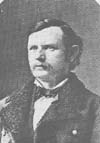
Thomas Benton Weir (left) was born in Nashville, Ohio, on September 28, 1838. He was the Captain in command of Company D during scouting and the hilltop fight.






